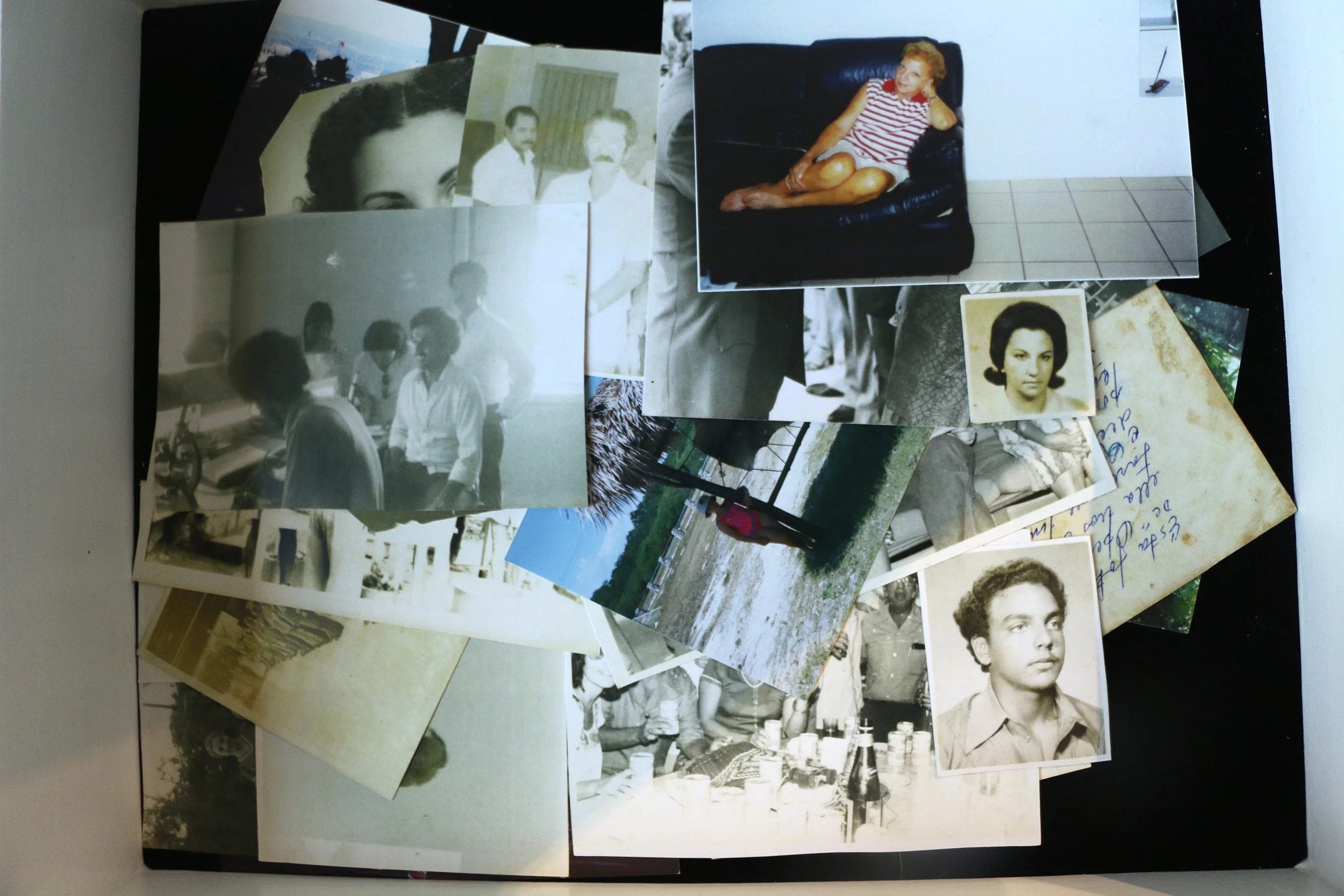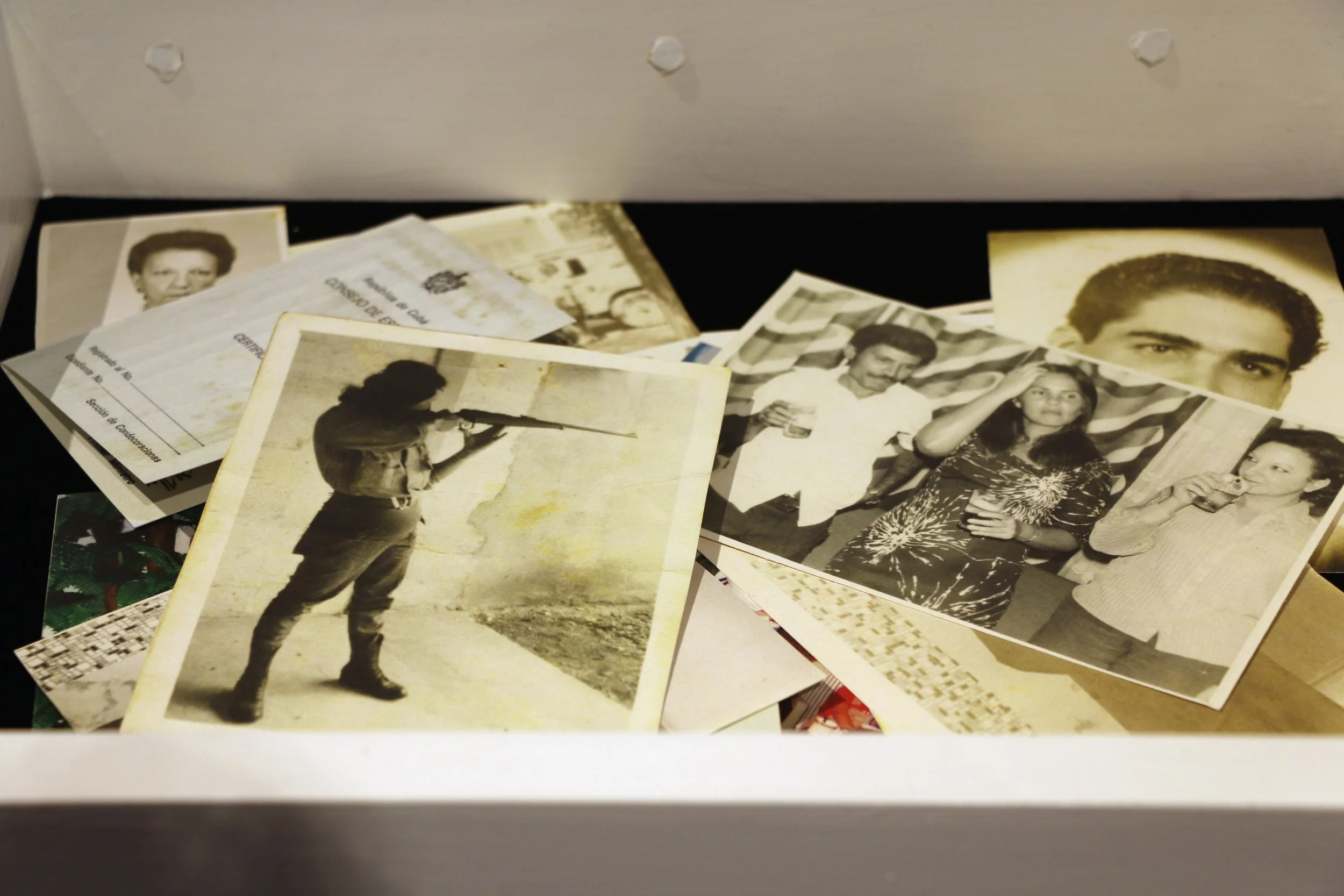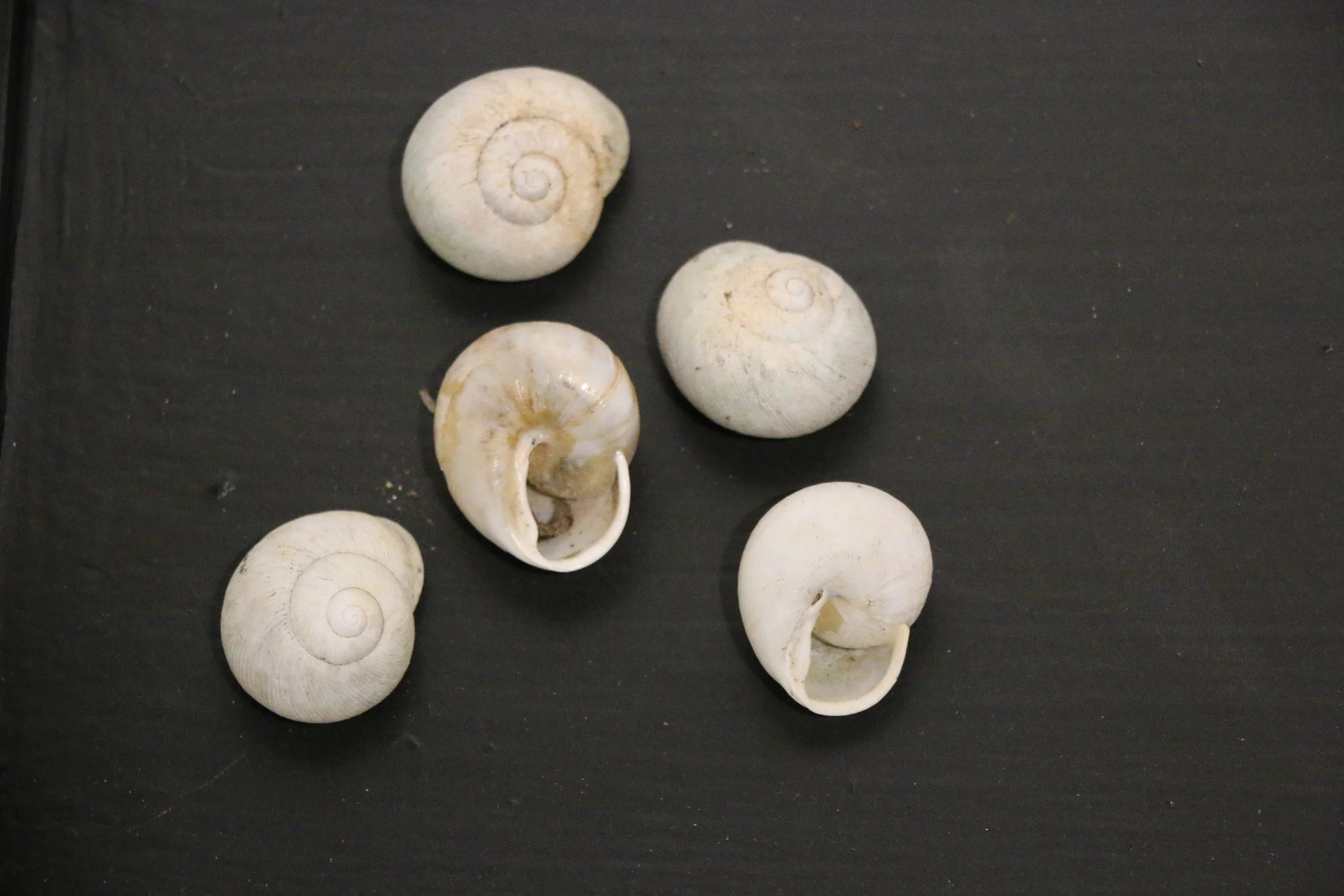Una Mujer Y Sus Medallas
A Hampshire College Division III senior thesis show
Una Mujer y Sus Medallas (A Woman and Her Medals) is my expression of the divine feminine and its capacity for heroism in political revolution.
This work weaves together the stories, observations, personal experiences and dreams of my Cuban adoptive grandmother Magaly Elias Jacobo, the work of deceased Cuban artist Ana Mendieta, and my own art work inspired by their example. Magaly and Mendieta are linked through the Cuban soil, the pain of loss and by the mythic and real power of being women. They worked to create—Mendeita through art, and Magaly through revolution—and each came to mourn the fate of the nation from which they sprang.
In my multi-media work, along with photographs, videos, personal artifacts and archival materials, I pay homage to these two sacred women, through silkscreen prints, and impressions of Mendeita’s goddess forms from the caves in Jacuro, Cuba, My search for the divine feminine took me to these sacred caves where Mendieta carved goddess forms into the walls. Here I performed an ode to both women, by leaving impressions of Magaly’s medals and her hands on the floor deep in the caves to ground and affirm her. We three are connected through this place; its force binds us in the wisdom and strength of our collective experiences.
I have created these works to connect to female power, to continue our struggle for respect, to inspire and be inspired.
Magalis Elias Jacobo
Biography
Magaly Elias Jacobo was born on December 27, 1937 in Bayamo, Oriente, Cuba. When revolution started in Cuba, Magaly decided to dedicate her life to the communist party and their socialist ideals. She joined under the leadership of Fidel Castro who defended the right of Cubans to live without governments whose only interest was to enrich and respond to foreign interests such as the United States and its allies.
At the age of nineteen, Magaly joined the revolution as an underground insurgent; she kept her Clandestina identity secret. She worked as a messenger between Guantamo City and the Sierra Maestra mountains where Guerillas were fighting under Castro. Women like Magaly would carry hidden messages, money and guns in their pants into the jungles. She would carry out these missions multiple times a week, even multiple times a day. The cities were “ratoneras” (rat traps) because nobody knew who was pro revolution and pro Batista. Not surprisingly, Magaly’s identity as a Clandestina was outed by the authorities. Her photograph was reproduced on a wanted poster and plastered around the city. While Magaly never went to prison, other Cladentinas were imprisoned and suffered brutal rape, beatings and murder. She became “quemada” (known to the authority) in Guantanamo and so joined Raul Castro’s brigade in the Sierra mountains on April 1, 1958. The insurgents constantly changed their location, eluding potential captors until the Triumph of the Revolution on January 1, 1959.
Within five years of the Triumph, her sons René Antonio Guerro Jacobo and Alexis Antonio Guerrero Jacobo were born. Over the next 20 years, Magaly left them and Cuba repeatedly to volunteer abroad in support of the ideals born out of the Cuban Revolution. She spent two years in Angola, a year and half in Yemen, and seven months in Spain.
The Special Period began in 1989, with the fall of the Soviet Union and , the island was devoured by famine. The United States tightened its embargo. Magaly worked hard to ensure her sons never went a day without food. In September 1994, her two sons boarded a ship headed to
Mexico, and from there they illegally entered into the United States seeking political asylum in Miami. Only then did they tell Magaly that they had immigrated. This was the worst day of her life. Part of the heartbreak of her sons leaving was the realization that what she had fought for had somehow failed her. When her son Rene developed cancer, Magaly tried to visit him in the U.S., but the U.S. Interests Section refused her visa. One month after Rene’s death, his body was shipped back to Cuba to be reunited with his grieving mother.
Hayden Lilly headed to school, 2004
Hayden Lilly Daiber
Biography
I started traveling to Cuba in 2000, when I was seven. My relationship with Magaly began when my parents, as renters, shared her apartment for Hampshire’s study abroad program. We lived in the front of the apartment and she lived in the way back. There is a giant glass door that she installed that divided her section from the rented section. As we returned throughout the years that door opened a little bit more and a little bit more until eventually she would just leave it open.
When I was little, she started to take care of me, becoming a surrogate grandmother to me. It was intimate and very loving. She cooked me dinner, washed my clothes, changed my sheets. She would yell at me and she would kiss me. She would hug me and smile when I entered the room. When I was a teenager she would scold me for staying out too late, for drinking too much rum, for hanging out with boys and kissing them outside her apartment. When they called for me, she’d yell “Romeo’s on the phone.” She’d wait up for me at nights, slipping into unwanted sleep when she knew I’d gone out for the night, worried that I might not come home. I am her responsibility. To this day, she walks through the house at night, checking each lock on every window and door.
My mouth still waters for Magaly’s after school butter and mayonnaise sandwich.
I realized Magaly was more than just a grandmother figure when I discovered a picture of her in a book bandaging another injured insurgent during the Cuban revolution. Up until this point, I had only seen her in a domestic and nurturing role. That was the first time I had seen a picture of Magaly besides the one on her I.D. There was a remarkable history of Magaly who lives behind that giant locked door and I wanted to find out exactly who that person was.
A year later in January 2016, when my Div III began, I went to Magaly with a quest to discover her history, to pay my respects. Unraveling her story was a very difficult process. During our morning coffee she would dig deep into her memories. Her stories would last a half an hour or a couple of minuets. At times, she would be very compliant and collaborative. At other times I would be dismissed by a swat to my hand and the repeating sentence “I have to work now.” Sitting and drinking coffee were our most precious, intimate moments when she would confide in me and tell me the bits and pieces of her story. I noticed that I had sparked an interest in her. I’d come into her room and she would be looking through old photographs and documents, finding all her medals. For me it was an exploration and for her a rediscovery.
The last day of my stay in Havana she brought me to the cemetery and together searched for Rene’s bones. We washed the grave.
She is my grandmother with an incredible past and for me, the door is always open.































